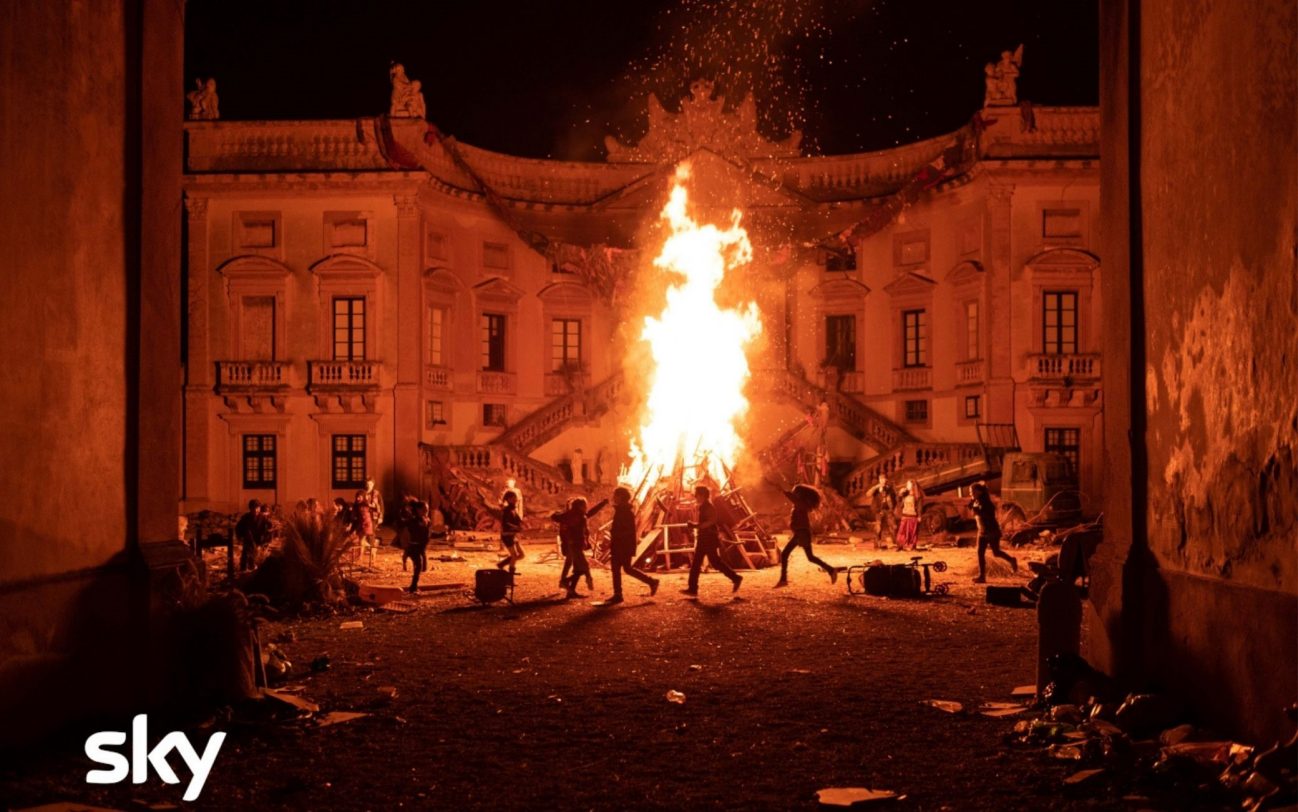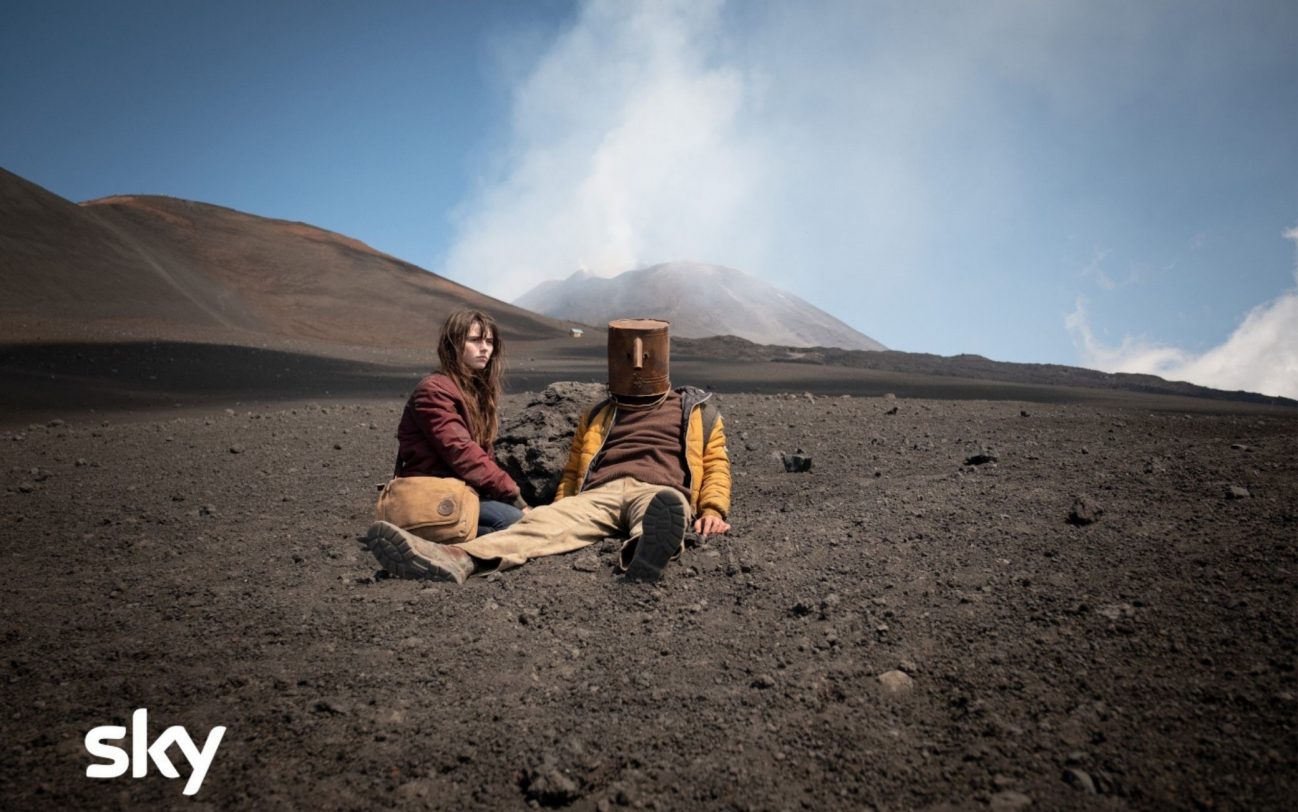
We use cookies
We use cookies and other tracking technologies to improve your browsing experience on our website, to show you personalized content and targeted ads, to analyze our website traffic, and to understand where our visitors are coming from.

Niccolò Ammaniti’s novel Anna was published in 2015. Six months after the TV series began shooting, the real world would have to reckon with the tragic consequences of the Covid-19 pandemic.
The opening sequences of the series show a world in the grip of a pandemic that has exterminated all the adults. The main setting is Palermo, introduced by a panning shot of a city in ruins, wreathed in surreal silence, left to its destruction: the Teatro Politeama Garibaldi in piazza Ruggero is half-destroyed from neglect.
While Anna (Giulia Dragotto) fights to survive against a gang of kids called the Blues and the barbs of its leader, adolescent Angelica, her little brother Astor (Alessandro Pecorella) wanders a city which offers recognisable glimpses of the past amidst the trash and abandoned cars: the staircase leading to Palazzo Pretorio is clogged with heaps of castoff clothing, where the only forms of life are seagulls and wild dogs looking for food; in the 16th century Palazzo Branciforte Astor meets another child and discovers the art of the marionettes - the opera dei pupi; passeggiata della Marina; the fiera del Mediterraneo whose interiors and exteriors were “disguised” to create an abandoned neighbourhood; La Favorita racecourse; the Caracciolo slope of the ancient Vucciria market; and the port and its shipyards. “God was here” is scrawled onto a homemade banner hanging in piazza Giulio Cesare, almost a warning to those who step through the monumental entrance on via Roma: and, in the background, the skyline of mount Pellegrino protects the rest of the residential centre. Even the furthermost tip of lungomare Amerigo Vespucci, the Isola delle Femmine, part of the metropolitan city of Palermo, offered its charms to meet the scenic requirements.

A series of flashbacks shows us how it all began: people start dying slowly, suffering from an unrelenting cough and a skin covered with spots. The virus that created this havoc is dubbed Red. The Liceo Classico Internazionale Giovanni Meli appears as Anna’s elementary school in the series.
Numerous open areas and backstreets - not always recognisable - are used to create a post-apocalyptic island where nature has taken control, inhabited by animals and scattered settlements of survivors who are all younger than 14 and now living by the rules of the jungle, those of the past having been swept away, including: Porto Empedocle, (Agrigento); Salemi and the lush vegetation in valle del Belice, damaged by earthquake in 1968, and the neighbouring areas of Gibellina and Santa Ninfa; and Mazara del Vallo featuring the coastal stretch with the small church of San Vito Martire.
The gang of Blues commanded by Angelica (Clara Tramontano) is based in the house where she lived with her parents and sister - Villa Valguarnera in Bagheria – where, in a spectral “living theatre”, they mimic the reality shows that once invaded their TV screens, orchestrating ancestral rites and cruel acts of submission with life and death stakes. “Buried” beneath mountains of castoff clothing, another 18th century residence in Bagheria also features in the series: Palazzo Cutò.

The lake they call “il canneto” where Anna’s only friend, Pietro (Giovanni Mavilla) has his camper, is really the Rosamarina di Caccamo dam, the largest manmade reservoir in Sicily. Pietro has grown up believing that the spirits of the dead go to mount Etna, passing through the crater to enter a dimension where they are finally free. Hoping to see some of these floating spirits, he decides to go there with Anna: the volcano scenes were shot at 3,000m above sea level on the south-facing slope where the Barbagallo craters are located.
The former service station “Barracca Ovest”, on the Messina-Catania A18 highway, near Santa Teresa di Riva (Messina), is the setting for a place once full of life but now deserted. Anna’s only hope lies in the mainland: perhaps there is still a surviving adult on the other side of that strip of sea that divides Sicily and Calabria and even a cure for the virus! The production shot near the disused electrical pylon of Torre Faro, which looms over the straits of Messina.
Scenes were also shot at Cinecittà Studios.
Niccolò Ammaniti’s novel Anna was published in 2015. Six months after the TV series began shooting, the real world would have to reckon with the tragic consequences of the Covid-19 pandemic.
The opening sequences of the series show a world in the grip of a pandemic that has exterminated all the adults. The main setting is Palermo, introduced by a panning shot of a city in ruins, wreathed in surreal silence, left to its destruction: the Teatro Politeama Garibaldi in piazza Ruggero is half-destroyed from neglect.
While Anna (Giulia Dragotto) fights to survive against a gang of kids called the Blues and the barbs of its leader, adolescent Angelica, her little brother Astor (Alessandro Pecorella) wanders a city which offers recognisable glimpses of the past amidst the trash and abandoned cars: the staircase leading to Palazzo Pretorio is clogged with heaps of castoff clothing, where the only forms of life are seagulls and wild dogs looking for food; in the 16th century Palazzo Branciforte Astor meets another child and discovers the art of the marionettes - the opera dei pupi; passeggiata della Marina; the fiera del Mediterraneo whose interiors and exteriors were “disguised” to create an abandoned neighbourhood; La Favorita racecourse; the Caracciolo slope of the ancient Vucciria market; and the port and its shipyards. “God was here” is scrawled onto a homemade banner hanging in piazza Giulio Cesare, almost a warning to those who step through the monumental entrance on via Roma: and, in the background, the skyline of mount Pellegrino protects the rest of the residential centre. Even the furthermost tip of lungomare Amerigo Vespucci, the Isola delle Femmine, part of the metropolitan city of Palermo, offered its charms to meet the scenic requirements.

A series of flashbacks shows us how it all began: people start dying slowly, suffering from an unrelenting cough and a skin covered with spots. The virus that created this havoc is dubbed Red. The Liceo Classico Internazionale Giovanni Meli appears as Anna’s elementary school in the series.
Numerous open areas and backstreets - not always recognisable - are used to create a post-apocalyptic island where nature has taken control, inhabited by animals and scattered settlements of survivors who are all younger than 14 and now living by the rules of the jungle, those of the past having been swept away, including: Porto Empedocle, (Agrigento); Salemi and the lush vegetation in valle del Belice, damaged by earthquake in 1968, and the neighbouring areas of Gibellina and Santa Ninfa; and Mazara del Vallo featuring the coastal stretch with the small church of San Vito Martire.
The gang of Blues commanded by Angelica (Clara Tramontano) is based in the house where she lived with her parents and sister - Villa Valguarnera in Bagheria – where, in a spectral “living theatre”, they mimic the reality shows that once invaded their TV screens, orchestrating ancestral rites and cruel acts of submission with life and death stakes. “Buried” beneath mountains of castoff clothing, another 18th century residence in Bagheria also features in the series: Palazzo Cutò.

The lake they call “il canneto” where Anna’s only friend, Pietro (Giovanni Mavilla) has his camper, is really the Rosamarina di Caccamo dam, the largest manmade reservoir in Sicily. Pietro has grown up believing that the spirits of the dead go to mount Etna, passing through the crater to enter a dimension where they are finally free. Hoping to see some of these floating spirits, he decides to go there with Anna: the volcano scenes were shot at 3,000m above sea level on the south-facing slope where the Barbagallo craters are located.
The former service station “Barracca Ovest”, on the Messina-Catania A18 highway, near Santa Teresa di Riva (Messina), is the setting for a place once full of life but now deserted. Anna’s only hope lies in the mainland: perhaps there is still a surviving adult on the other side of that strip of sea that divides Sicily and Calabria and even a cure for the virus! The production shot near the disused electrical pylon of Torre Faro, which looms over the straits of Messina.
Scenes were also shot at Cinecittà Studios.

Wildside, ARTE France, The New Life Company, Kwaï